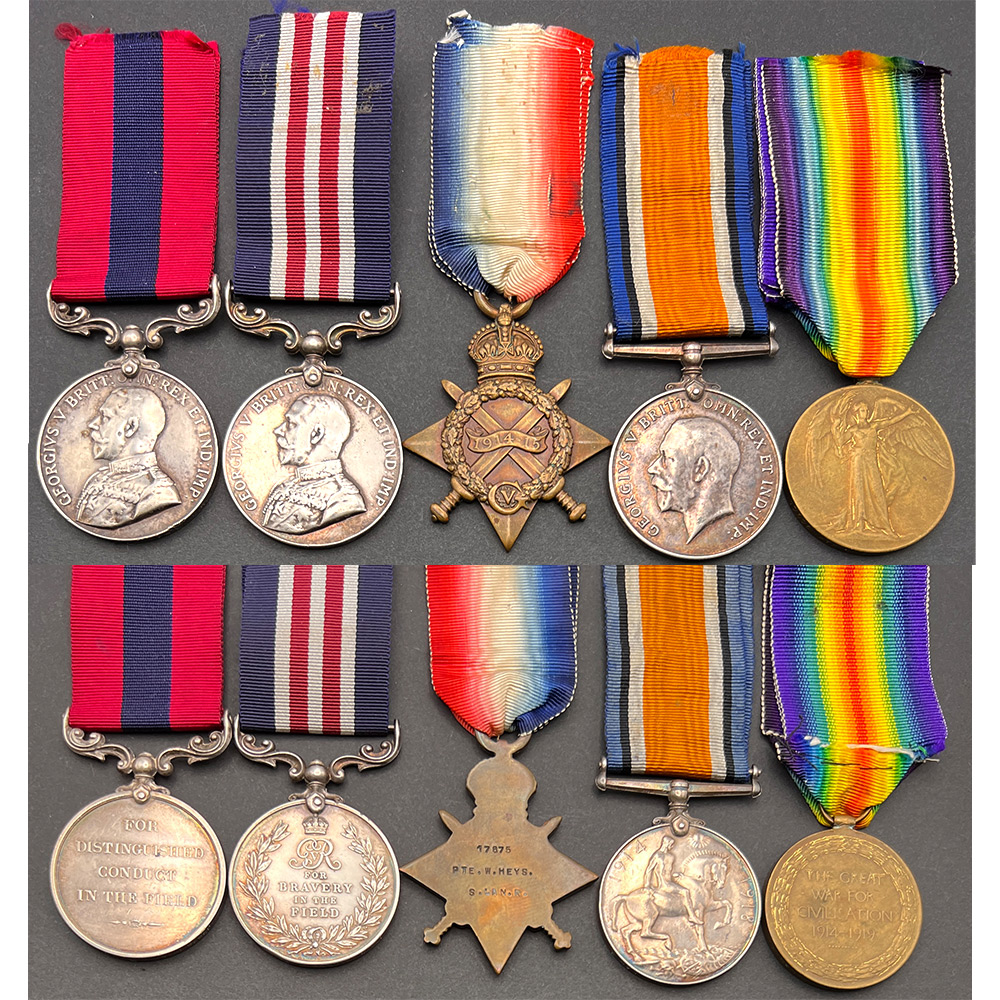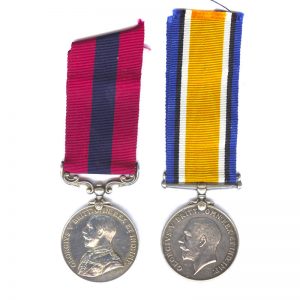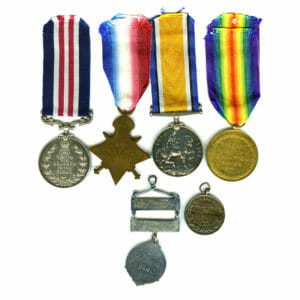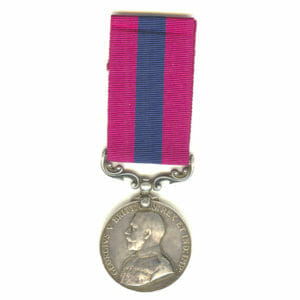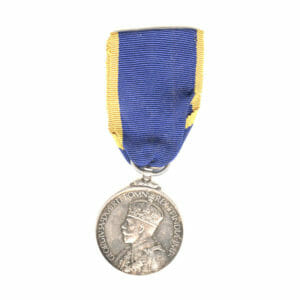Description
Distinguished Conduct Medal, GV, Military Medal, GV, 1914-15 Star, British War and Victory Medal, 17675 Private William Heys, 2nd Battalion South Lancashire Regiment. The award of his DCM, as recorded in the Oxford Chronicle, 19th October 1917, recalling the presentation of Gallantry Medals in Oxford by Lieut General Sir H.C. Sclater GCB, Commander in Chief, Southern Command: “DCM AND MM Private William Heys, awarded the D.C.M. on remaining behind to attend to other wounded men and rescuing wounded from no man’s land (Thiepval) in August 1916, and taking them off German Wire, although he was himself wounded. Military Medal awarded for rescuing wounded and devotion to duty at Messines, June, 1917.” DCM Officially impressed: “17675 Pte W. Heys. 2/S. Lanc: R” MM Officially impressed: “17675 Pte W. Heyes. 2S. Lanc: R” Note, spelled Heyes, correct same as London Gazette entry. 1914-15 Star officially impressed: “17675 Pte. W. Heys. S. Lan. R.” British War and Victory pair officially impressed: “17675 Pte. W. Heys. S. Lan. R.” Some polishing to obverse of his silver medals, but otherwise in well kept condition, Military Medal, announced in Supplement to the London Gazette, 16th August 1917: “17675 Pte W. Heyes, S Lan. R.” The newspaper article claims the award was for the Battle of Messines, 7-14th June 1917, this should be correct, as the 2nd Bn War Diary dated 11th July notes: “The following awards were notified today, The Military Medal, Pte W. Heyes.” The awards included the MC of Captain TC Eckenstein, whose personal papers at the IWM go into detail about the battalion Advance at Messines on 14th June. D.C.M. awarded in the London Gazette 20th October 1916 with citation, for gallantry on 2 occasions: “For conspicuous gallantry during operations. Though himself wounded he tended 6 other men who had been wounded by the same shell. On another occasion he tended wounded in ‘No Man’s Land’ under heavy fire, and carried them to safety.” The annotated roll of the DCM states that the first action occurred at Thiepval on 25th August 1916 and the second action was on 3rd September 1916 during the Battle of the Somme. The War Diary of 25th August, when on a special work party which records the wounded men he saved: “Frequent heavy showers, disposition unchanged. Battalion still in Aveluy Wood. Working party of 4 officers and 200 other ranks proceeded to the front lines about 8pm to carry out special work but were unable to continue and withdrew about midnight. Casualties – 1 man missing, 6 wounded, there was considerable activity in this sector during the night, enemy were using a considerable amount of rifle grenades.” The war diary of the day for 3rd September 1916 when he went out into No Man’s Land to save wounded men during a trench assault paints a hellish picture of the events: “Artillery barrage in progress from 5.10 am to 5.20 am, during which companies moved forward in open order in frontage of one company, about 15 yards between companies, and made an assault of objective mentioned yesterday. Enemy artillery fire was particularly heavy, a few men penetrated enemy’s trench but it was impossible to effect a lodgement, several attempts were made, the men being rallied by the few officers left and companies returned to our original line about 6.a.m. It was noted that the enemy trenches which were very battered, were very thinly held, we were able to secure only one prisoner, Enemy Artillery fire directed on to their own trenches as well as ours was exceptionally heavy. Our trenches were practically obliterated and the position most difficult, all ranks were in a very exhausted and distressed condition in consequence of the experiences of the past few days. During the attacks the following casualties: Lieut Col Cotton DSO – Missing, Major Maxwell DSO, Wounded, 2nd Lieut Ireland Blackburne, Ash-Moody, Harrison, Neville all Wounded, Capt Kew, wounded. Other ranks: 9 Killed, 91 wounded and 23 missing.” PERSONAL LIFE DETAILS Mr William “Hayes”, sometimes Heys or Heyes, was born during 1890 in Salford, Lancashire. He grew up in Pendleton, Salford, into a big family, where his father James was a Joiner. He signed up at Oxford for war service (as noted in the London Gazette), and served with his home town unit, the South Lancashire Regiment. William Heys first entered into the war on 21st April 1915 in France. He later joined the 27th Battalion King’s Liverpool Regiment. After the war was over he was discharged as Class Z on 6th March 1919. He wasted no time in getting married, marrying Gladys Victoria Perkins, on April 10th 1919 in Steeple Aston. William was noted as a “Soldier” living in Eccles, Lancs, son of James Hayes, a Joiner. Gladys, had actually been a member of the Q.M.A.A.C. Queen Mary’s Army Auxiliary Corps, so it looks like they might have met during the war. Gladys had some medals herself, earning the British War and Victory Medal pair for her services as a Worker with the QMAAC. After the war, he settled with his wife in Steeple Aston, Oxfordshire, shown in the 1921 Census. He and his wife, lived at Steeple Aston, where he worked as a Machine Tool Fitter for Messrs Samuelson and Co Ltd, Agricultural Millers and General Consigners, in Banbury, Oxfordshire.
